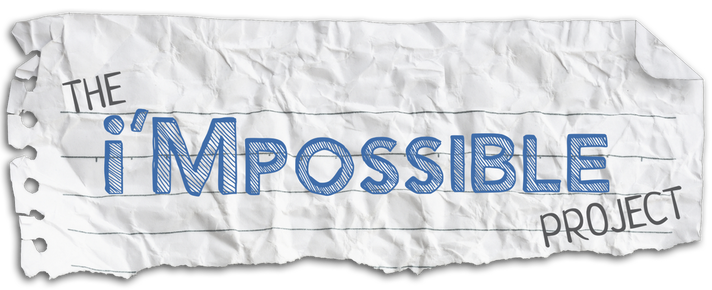
Storytelling will Save the World… Yes, Even Yours
September 28, 2015
Alliance for Mental Health – A Position Paper
October 15, 2016In order to interact with its environment and implement all the functional behaviours necessary to survive, every living thing requires a system of knowledge, whether primitive or sophisticated; enabling it to perceive and to recognise what is happening in the world around it and to then coordinate its actions accordingly. Primitive living organisms are equipped with a basic nervous system with a limited number of functions that have the characteristic of being fixed, rigid, poorly articulated and undifferentiated; although adequate for their needs of survival. As one progresses up the evolutionary ladder, nervous systems become increasingly more complex and sophisticated in their functions. Organisms like humans, that possess a cerebral cortex as part of their nervous system, have at their disposal, a supreme centre of coordination for all cognitive functions and the unique ability to construct mental representations. It therefore follows that the objective of cognitive therapy is to formulate models capable of explaining man’s modus operandi in terms of his cognitive functions. These cognitive functions don’t only refer to explicit knowledge, but all information, both conscious and unconscious, including: conceptual, motor and emotional, that man possesses and uses in his interaction with his environment. The function of knowledge is to represent reality and make predictions about what may happen. It is based on these expectations or anticipations that man defines plans of action and organises his behaviour in relation to specific purposes.
In order to explain the cognitive model to my patients, I use the analogy of man as a data processor; as a generator of meanings and personal knowledge. Like a scientist, man builds models of himself and his world that determine what he perceives and that allow him to make assumptions and have expectations that can be tested, validated or invalidated by experiments (his behaviour). The information that makes up our knowledge is permanently stored in memory. In order to be used quickly and effectively it must be organised economically (so as not to occupy too much space), ordered and coordinated (so as to be retrieved quickly when needed). In order to describe the mode of functioning of the mind and its processes (perception, memory, learning, language, reasoning, emotions, motor skills, etc.), the cognitive model has proposed different models of knowledge representation. Taking into account the complexity of the phenomenon, none of these models can be considered exhaustive, as each represents an approximate explanation. One of the most frequently used is the one that assumes that knowledge is organised into structures called schemas. Schemas are not accurate representations of situations or photographs of events, but flexible structures of general knowledge about oneself and one’s surrounding. Schemas define what can be expected in particular situations, help in predicting consequences, and therefore guide decisions regarding our actions (Anderson, Spiro, & Montague, 1977). Therefore, to a certain extent, schemas limit knowledge: only those objects for which we already have some kind of schematic representation may be recognised. In some cases the information available in our surroundings is ignored or is not elaborated upon, when we do not possess the patterns that allow us to interpret this information (the sound of an engine in a faulty car can be a clear diagnostic symptom for the mechanic, while it could be quite meaningless to the owner of the vehicle who does not possess similar competence). Schemas are therefore subjective in nature; even though some, such as those relating to social situations, may have been constructed in a similar manner by different individuals, they are however, not identical.
Our cognitions generate expectations. When an expectation is invalidated, our cognitive system finds itself having to revise the underlying schemas, in order to make them more reliable and therefore more useful for making accurate predictions. The better our cognitive system is structured, the better its predictions and ability to adapt to reality. If our cognitive system is able to accept invalidations, i.e. if it is flexible, it can be modified to meet the invalidations. In psychiatric pathology, it can be observed that the patterns of the patient are not flexible, but either too lax or too rigid (Young, Klosko, & Weishaar, 2003). Lax schemas are characterised by the fact that the structures of each schema and the relationships between the various schemas, are defined in an ambiguous way and therefore invalidations are not recognised. For example, a patient I was seeing in therapy for depression had an "affectionate behaviour" schema which was too lax, and therefore found it difficult to decide whether another person's behaviour was indeed affectionate or not. Even if my patient was able to decipher that the behaviour being displayed was in fact, affectionate in his regard, his higher order schema of "person therefore interested in me" was itself also poorly defined and therefore he still found it difficult to consider affectionate and similar behaviour as evidence of romantic interest. In his uncertainty, my patient would continuously seek confirmation of affection, resulting in him trying to control his partner; the result was that he pushed her further away with this behaviour. In contrast, in patients with rigid schemas, the structure of each schema and the relationships between them, are defined in an immutable way. I find this pattern very prevalent in patients with obsessive compulsive personality traits. Patients with such a schema system are only capable of accepting information strictly consistent with their predefined schema and are unable to accept invalidations, which tend to be excluded from their own cognitive processes. When a lower-order schema is invalidated, the rigid link of this schema to a higher-order schema, results in the higher-order schema being invalidated too. This has a ripple effect that leads to the invalidation of the patterns of self with devastating effects on the entire system of personal identity.

